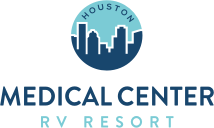A City Built on Healthcare: The History of the Texas Medical Center
The vast network of medical facilities in Houston can be traced back to one visionary businessman, Monroe D. Anderson. At the turn of the 20th century, Anderson, a banker and cotton trader from Jackson, Tennessee, founded a cotton company. He and his brother-in-law nurtured it to become a successful venture, eventually becoming the world’s largest cotton company, and the profits they generated continue to be felt in the community to this day. Thanks, in part, to the large endowment created by Anderson “for the betterment and welfare of mankind.”
A Great Opportunity
During his time in Houston, his love for the city was fostered from the moment he said foot in Texas in 1907. He knew that Houston was a growing financial center with great potential, and he set out to capitalize on that aspect.
In 1936, Anderson created the MD Anderson Foundation in conjunction with Bates and John H. Freeman in 1936 to keep his cotton company, Anderson, Clayton and Co., from being dismantled in the event of his death. An astute businessman, Anderson used caution in the management of both his property and money. With the Foundation, he dictated that the trustees of his estate should have deliberate instructions to allocate his fortune to be used “for the establishment, support, and maintenance of hospitals…the promotion of health, science, education, and the advancement and diffusion of knowledge.”
The Birth of a Legacy
Upon Anderson’s death in 1939, the Foundation, as the primary benefactor in the estate, received over 19 million dollars in funds, making it the largest charitable foundation in Texas at the time. Although Anderson became ill before he could finalize any specific plans for the funds, his partners, Bates and Freeman, had several lengthy discussions with him on the matter prior to his illness. It was they who strived to carry out his wishes, as they knew the direction he wanted to go.
As a result, they developed a project that, according to Anderson’s wishes, would bring the greatest good to the greatest number of people. Along with bank executive Horace M. Wilkins, they began to hone a plan that would realize Anderson’s vision.
They brought in Texan-born Ernst W. Bertner, M.D. He traveled extensively throughout the United States and Europe, studying the great medical centers of the world. He was keen on creating a “city of medicine” and foresaw the advantages of bringing together medical education and patient care in one physical location. In 1941, legislation was passed that would give this concept a solid foundation in which to build upon. House Bill 268 authorized a state cancer research hospital, and after several discussions among the trustees of Anderson’s estate, it was determined that the research hospital be built in Houston.
Tough Beginnings
The location was determined to be a 134-acre piece of land not far from Rice Institute (now Rice University) and Hermann Hospital. It was the best location possible, as both facilities were well positioned to benefit the medical center. The trustees wasted no time in moving the project forward. On November 6, 1943, the MD Anderson Foundation and the City of Houston reached an agreement for the purchase of the land, and a full-page ad in the Houston post was immediately printed to urge the citizens of Houston to vote to develop the medical complex, which was necessary because the land was designated as city park land.
The voters responded favorably, and so the Texas Medical Center was born.
But it came to fruition slowly, as many pieces of the puzzle had to be put in place. In November of 1945, one month after Japan surrendered to the United States signaling the end of WWII, the Texas Medical Center was chartered as a non-profit corporation. Through the 1950s, the Methodist Hospital, St. Luke’s Episcopal Hospital, and Texas Children’s Hospital all broke ground on the site. Over the coming years, their success spurred other medical Institutions to join the Medical Center, and the MD Anderson Foundation was able to contribute major funding for those recipients of the land.
Today, the Texas Medical Center has 54 member institutions composed of both government agencies and not-for-profit health care facilities. It is a sprawling campus that receives over 160,000 visitors daily. Over 7 million patients visit the Texas Medical Center annually. The medical center continues its focus on providing the best care for its patients, as well as the best in academic training for health professionals at all levels in support of medical research. It has honed the talents of countless health care professionals and is a worldwide leader in medical care and research.
